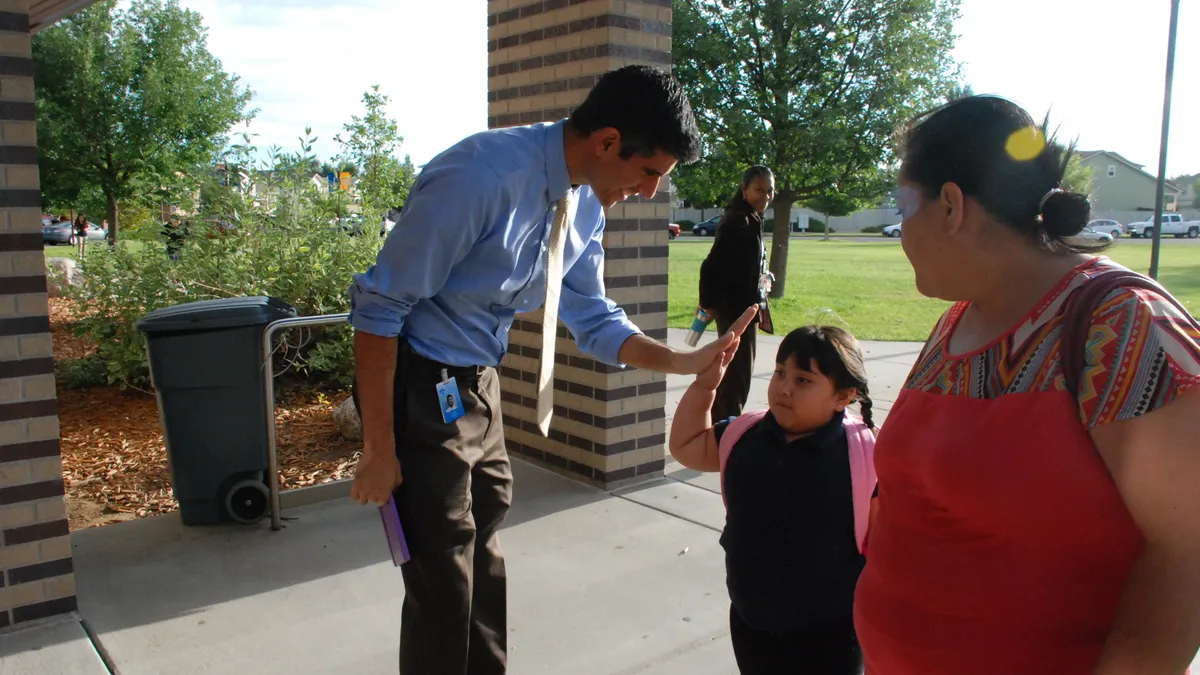Dive Brief:
-
Writing for District Administration, veteran teacher Patrick Kearney shares his professional opinion that cookie-cutter solutions will not work in a field as diverse as education.
-
He writes that the needs of learners vary greatly from school to school and community to community, and that one-size-fits-all, black-and-white business solutions won't produce creative critical-thinkers who can effectively communicate and collaborate.
-
Ultimately, school improvement lies in the hands of teachers who must be empowered to do the work on the front lines, Kearney asserts.
Dive Insight:
The temptation to treat the field of education like the business arena is evident in many reform approaches. The prevailing idea seems to be that if schools employ certain "best practices" (as determined by the current political and educational climate), they will be able to turn out quality educational products (i.e., students) as determined by adequate quality controls (i.e., standardized testing).
The problem with this approach is these "educational products" each have minds and emotions and are influenced by their familial, cultural and social environments. In an educational setting, this means that inner-city schools will face different challenges than rural schools. Schools with larger populations of English learners will face different challenges than schools that struggle to find students from diverse backgrounds. And, unfortunately, schools in impoverished areas will face different challenges than schools in affluent areas.
While education leaders struggle to find the next great solution to the problem of educational equity, the reality is there will be no one solution to an issue as complex as the education of humans. Diverse student populations require diverse teaching strategies, and the solution to education of individuals may require a more individualized approach to education.
Meanwhile, school district leaders are often faced with governing a district in which the challenges facing no two schools are alike. While much research has been done concerning the challenge of diversity in our schools, surprisingly little has been done on the diversity of challenges facing many administrators. Perhaps this area is ripe for exploration.






 Dive Awards
Dive Awards







